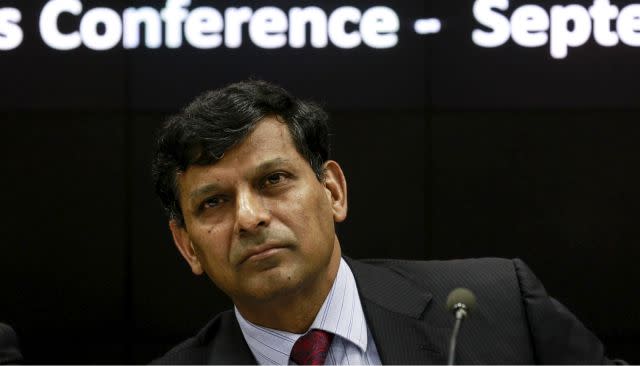What does Raghuram Rajan’s rate cut mean for India’s economy—and you?

Reserve Bank of India (RBI) governor Raghuram Rajan’s announcement of slashing the interest rate by 50 basis points (bps) has come at the right time. And it’s completely based on economic merit.
The decision is in tune with developments in both international and domestic markets. It adds to the positive sentiment created by prime minister Narendra Modi during his recent visit to the US—that India is ready for an investment boom. In fact, India has pipped China to become the world’s most attractive destination for foreign direct investment.
However, the interest rate alone cannot do much, if it is not backed by the ease of doing business.
This time around, the internal and external economic environments have provided space to the RBI to give a big push to revive investment and demand in the economy, particularly when the government is targeting a growth rate of between 8% and 8.5%. This is despite the fact that the actual growth in the first quarter of 2015 was 7%.
What does this mean for the economy?
The RBI mandate is inflation targeting as defined by the memorandum of understanding signed between the government and the central bank in February 2015. And the RBI has succeeded in moderating consumer price inflation—or retail inflation—in the last few months. The current inflation number—well within the suggested inflation targeting of 4%—along with lower commodity prices across sectors, except food, created the perfect timing for a rate cut.
Low international commodity prices, and thereby input costs, have not contributed to India’s growth due to export contraction. In fact, India’s exports have been sluggish and have turned negative for last two quarters. Therefore, giving a push to domestic demand to offset external demand through export contraction is the need of the hour.
Domestic demand across commodity classes in India is less than expected, leading to underutilisation—use of less than 70% of capacity—in the industry. The credit off-take, an indicator of economic activity and demand, has also been lower than expected in few quarters despite the RBI cutting the repo rate three times earlier. The reduction of the repo rate by 50 bps reduces interest rate by 1.25 bps in the current year, and is expected to boost both investment and consumer demand.
Lower cost of borrowing will give a boost to capital expenditure of firms, which are struggling with cash flows and trying to manage their balance sheets. Capital expenditure is at a five-year low due to lack of demand and the rate cut would certainly create the demand, at least in the short term. Some of the big sectors such as infrastructure, real estate and housing are expected to benefit from the rate cut.
What does this mean for you?
The timing of the decision is also right—just before the Indian festivals of Navaratri and Diwali.
As a tradition, Indians consider festive occasions to be auspicious for investing and buying consumer durables. Cheaper loans will attract consumers for both borrowing and investments in housing, automobile and realty sectors during the festivals.
Housing is a big sector, with an influence on other segments like construction, metal and cement, and thereby the overall economic activity. The expected increase in low-cost borrowing, along with the government’s focus on low and affordable housing policy, will play a role in the revival of the housing sector.
Of course, it all depends on the pace and the magnitude of monetary transmission. In India, monetary policy transmission has been weak and comes with a lag. But this time, the response has been quick.
For instance, State Bank of India, the country’s largest lender, has already announced to cut the base rate by 40 bps applicable from Oct. 5. Other banks like Punjab National Bank and Bank of Baroda have also announced cuts in the base rate. It’s a matter of time that other banks and financial institutions will follow suit, given an open and competitive financial sector in India.
So, it wasn’t a big surprise, but Rajan made the right call.
We welcome your comments at ideas.india@qz.com.

Sign up for the Quartz Daily Brief, our free daily newsletter with the world’s most important and interesting news.
More stories from Quartz:

